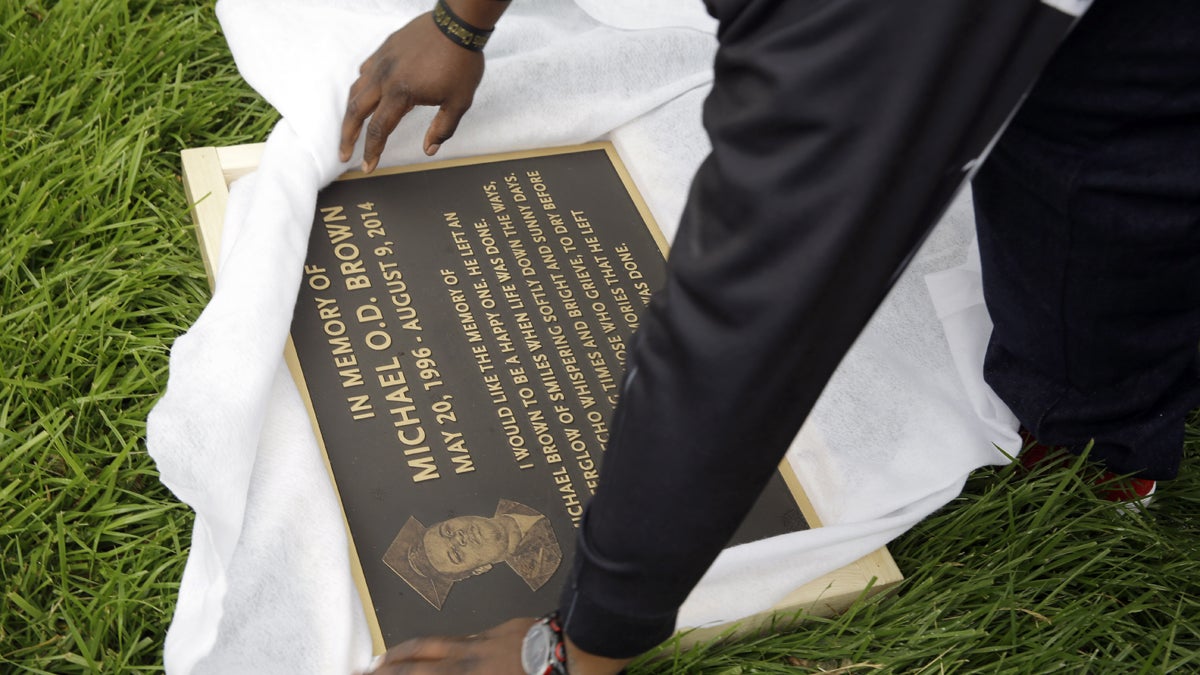A year after Michael Brown killing, reality for blacks hasn’t changed
Listen
Michael Brown Sr. is shown unwrapping a plaque memorializing his son, Michael Brown in Ferguson, Missouri. (AP Photo/Jeff Roberson, file)
While the average American says that black and white relations are worse now than in the past, the average black American reports no more instances of discrimination than he or she has had in the past, suggesting that broad attitudes about race relations reflect what is seen in the news media, but that the reality for blacks hasn’t changed.
President Barack Obama this week defended his Iran nuclear pact. Depending on the poll, Americans are divided on the issue or against it, suggesting that Obama has a challenge ahead of him in selling the nation on the idea.
New data from a special in-depth Minority Rights and Relations poll shows that, while the average American says that black and white relations are worse now than they have been in the past, the average black American reports no more instances of discrimination than he or she has had in the past. These very important findings suggest that Americans’ broad attitudes about race relations reflect what they hear and see in the news media, but that the reality for black Americans hasn’t changed. Most blacks would like to see more police presence in their area rather than less, even those who say that minorities are treated unfairly in their area.
Gallup’s annual poll on drinking shows that the percentage of Americans who never drink alcohol is about one third, and that number hasn’t changed much over time. Beer still rules as the favorite alcoholic beverage of choice for Americans, followed by wine and then liquor.
The percentage of Americans who say that drinking has been a cause of trouble in their families is at 32 percent. This is twice the 15 percent measured way back in 1947 when Gallup first asked the question.
WHYY is your source for fact-based, in-depth journalism and information. As a nonprofit organization, we rely on financial support from readers like you. Please give today.


